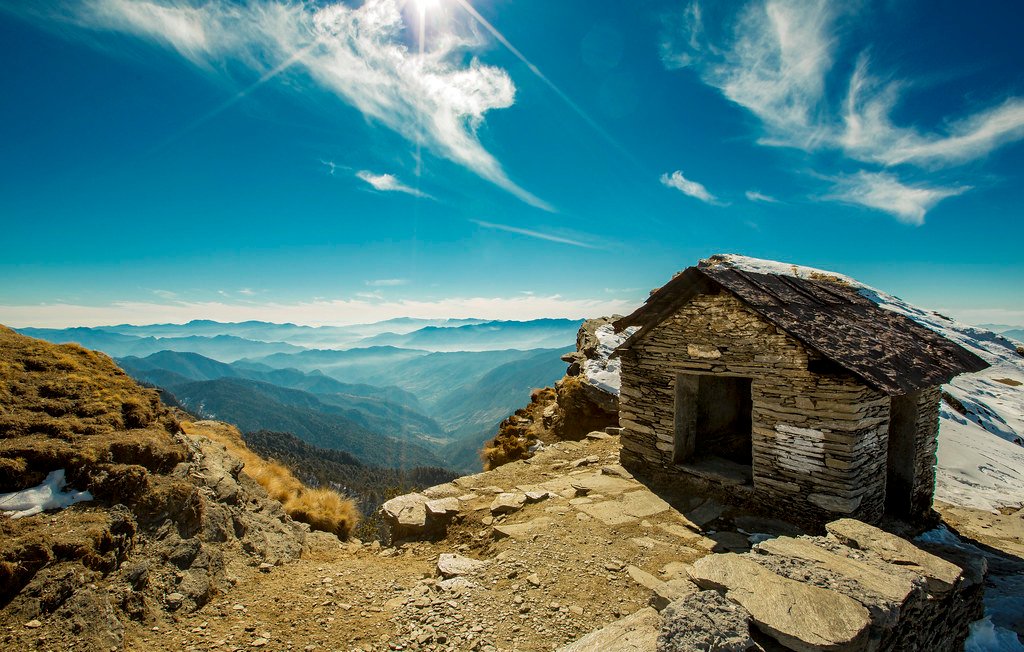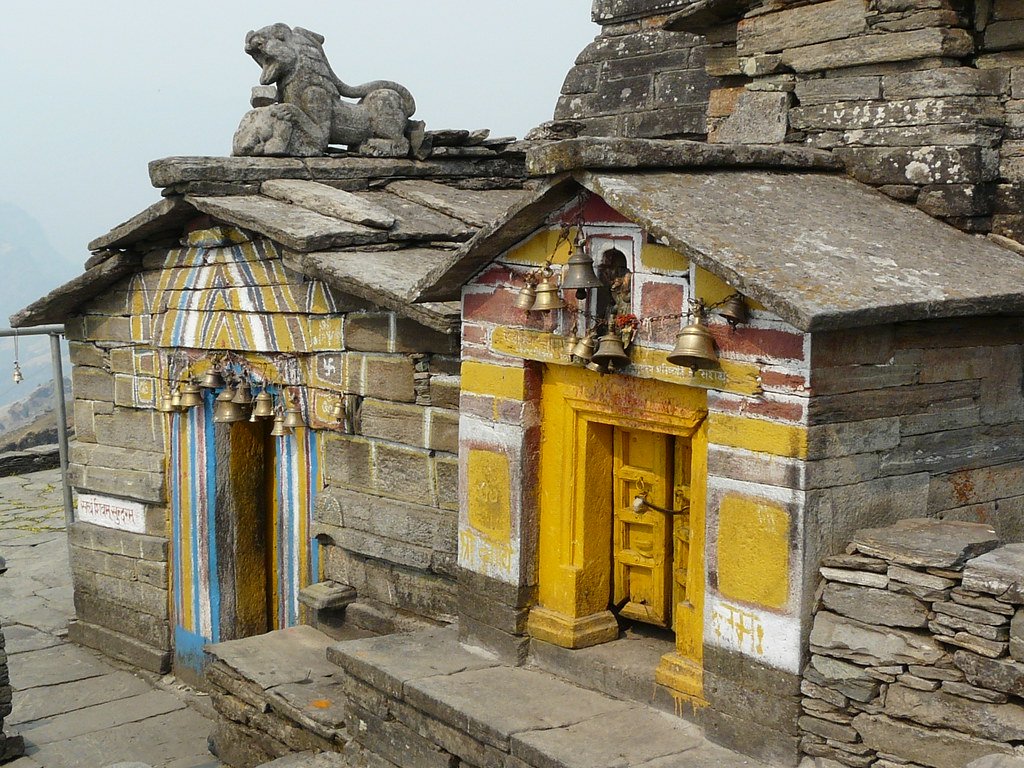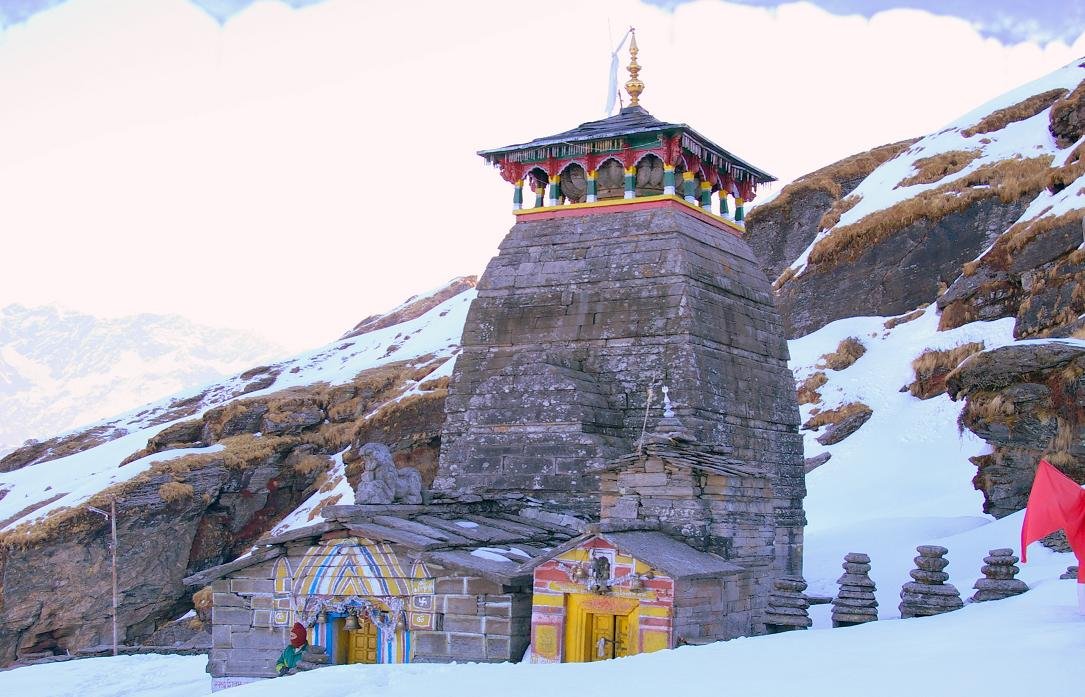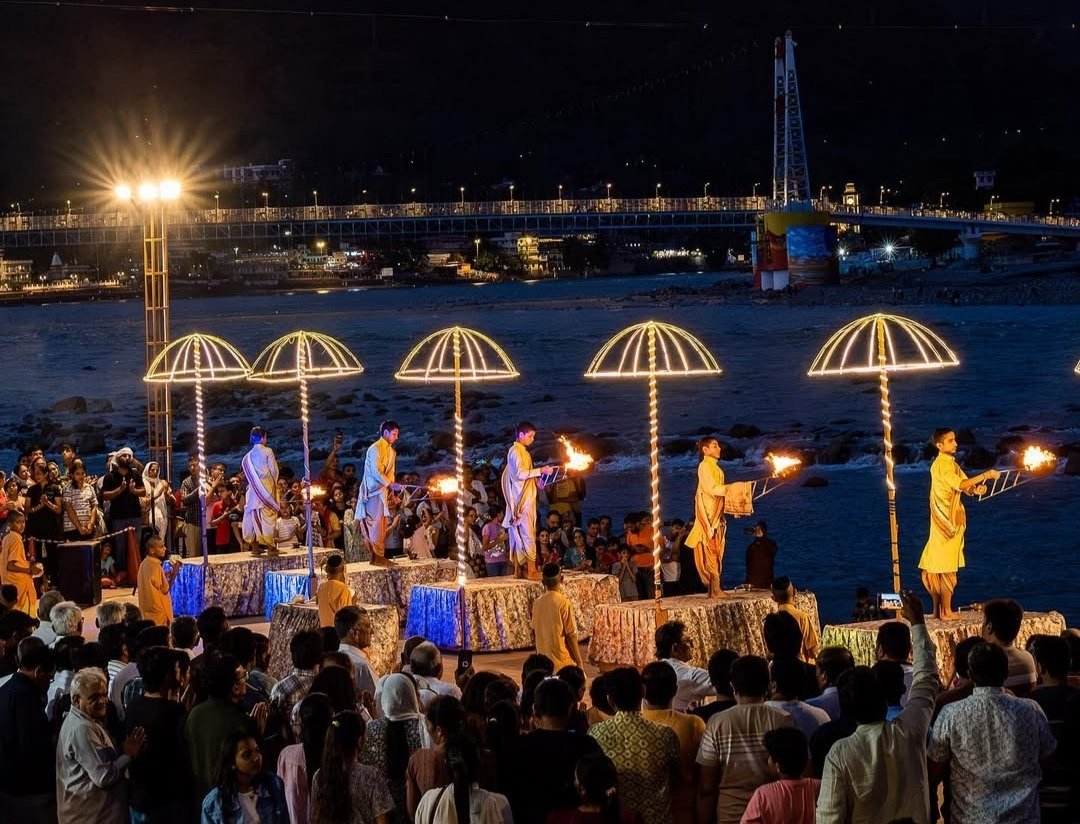Tungnath, renowned as the highest Shiva temple in the world, is nestled in the heart of the Garhwal Himalayas in Uttarakhand. This sacred temple, part of the revered Panch Kedar circuit, draws both spiritual seekers and adventure enthusiasts with its rich cultural heritage and breathtaking natural beauty.
Geography and Climate: The Himalayan Canvas

Situated at an altitude of approximately 3,680 meters above sea level, Tungnath is set against the backdrop of towering Himalayan peaks and sprawling alpine meadows. The temple’s location near Chopta in the Chamoli district provides visitors with panoramic views of snow-capped mountains and dense, verdant forests. This unique geography not only makes the trek to Tungnath an adventure in itself but also offers an immersive experience in nature’s grandeur.
The climate here is as dynamic as its landscape. Summers (April to June) offer mild and pleasant weather, ideal for trekking and exploring the temple. The monsoon season transforms the region into a lush green paradise, though it comes with frequent showers. Autumn (September to October) is another popular time to visit, as the cool, clear skies provide stunning views of the surrounding peaks. Winters, while breathtaking with heavy snowfall, can be challenging for travel, creating a serene but demanding environment.
The Spiritual and Cultural Experience

Tungnath is not just a destination for trekking enthusiasts; it is also a sanctuary for those seeking spiritual solace. The temple’s serene environment, coupled with the profound legends of Lord Shiva, creates a space for introspection and meditation. Visitors often report a palpable energy as they walk through the ancient corridors of faith, where every stone seems to echo with centuries of devotion and prayer.
For many, the journey to Tungnath is a pilgrimage—a quest for inner peace and transformation. The experience is enhanced by the surrounding cultural richness, where local traditions and the simplicity of Himalayan life offer a refreshing contrast to urban chaos.
My Personal Journey: A Walk Through History

During my visit to Tungnath, I was captivated not only by the temple’s historical aura but also by the sheer beauty of the Himalayan landscape. The trek, which began from Chopta, was a blend of physical challenge and spiritual rejuvenation. With each step on the winding trail, I felt a deeper connection with the past—imagining the countless pilgrims who had trodden the same path centuries ago.
Standing before the ancient temple, I experienced a profound moment of reflection. The quiet majesty of the surroundings, the crisp mountain air, and the distant sounds of nature combined to create an atmosphere of tranquility. It was as if time stood still, allowing me to fully absorb the historical and spiritual essence of Tungnath. This personal encounter with the past enriched my journey, leaving an indelible mark on my soul.
Practical Tips for Planning Your Trip
To ensure a safe and enjoyable journey to Tungnath, consider the following tips:
- Timing: Visit during the summer (April to June) or autumn (September to October) for the best weather conditions.
- Gear: Pack essential trekking equipment, including sturdy footwear, warm clothing, and sufficient water.
- Guidance: Hiring a local guide can enhance your experience, providing valuable insights and ensuring your safety on challenging paths.
- Preparation: Acclimatize properly to the altitude and listen to your body to avoid altitude sickness.
These practical measures, combined with the temple’s rich history and natural beauty, will help you make the most of your trip to this remarkable destination.
Final Thoughts
Tungnath is more than just an ancient temple; it is a confluence of history, spirituality, adventure, and nature. Its rich legacy, combined with the dramatic Himalayan backdrop and a personal journey that touches the soul, makes it a must-visit destination for travelers from all walks of life. Whether you are drawn by the allure of ancient legends, the challenge of a mountain trek, or the promise of a transformative spiritual experience, Tungnath has something extraordinary to offer.
Embark on your journey today and let the sacred trails of Tungnath guide you through a timeless experience of discovery and self-realization.
Is Tungnath higher than Kedarnath?
Tungnath is higher than Kedarnath. Tungnath is located at approximately 3,680 meters (around 12,074 feet) above sea level, whereas Kedarnath is situated at about 3,583 meters (roughly 11,750 feet).
Which body part of Shiva is in Tungnath?
According to the Panch Kedar legend, Tungnath is believed to enshrine Shiva’s hair. In this myth, as Shiva evaded the Pandavas, his body parts manifested in different locations, with Tungnath representing his matted locks.
When is the best time to visit Tungnath considering its climate?
The ideal time to visit Tungnath is during summer (April to June) or autumn (September to October), when the climate is pleasant for trekking. These seasons offer clear skies and enjoyable weather for exploring both the temple and the surrounding Himalayan landscape.
What makes the Tungnath trek unique?
The Tungnath trek offers an unforgettable Himalayan trek through diverse landscapes, from lush alpine meadows to rocky paths. This trekking in Uttarakhand combines physical challenge with spiritual enrichment, making it a top destination for adventure enthusiasts.
What is the history of Tungnath?
Tungnath is steeped in ancient legends and is part of the revered Panch Kedar circuit. Its rich history as an ancient Shiva temple highlights a profound spiritual legacy that has attracted pilgrims and trekkers for centuries.






Leave a Reply